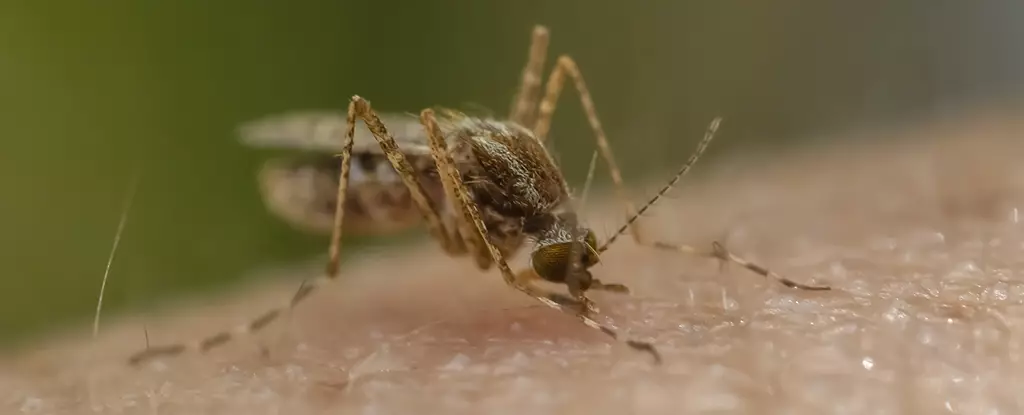Malaria has long been a significant global public health challenge, with millions of cases reported annually and a substantial death toll, particularly among vulnerable populations. Traditionally, mosquitoes are viewed solely as carriers of the malaria parasite, Plasmodium falciparum, which induces severe illness. However, a groundbreaking study has reframed this narrative by harnessing mosquitoes as a vehicle for administering a new and potentially more effective vaccine. This innovative approach could redefine how the medical community responds to malaria.
Researchers at Leiden University and Radboud University in the Netherlands have made significant strides in creating a second-generation malaria vaccine that aims to provide heightened immunity against the disease. The innovative aspect of this vaccine lies in its utilization of a genetically modified form of the P. falciparum parasite. Unlike traditional vaccines that often employ killed or inactivated pathogens, this new vaccine introduces a weakened strain that is incapable of causing disease. As explained by vaccinologist Meta Roestenberg, these genetically altered parasites mimic the natural infection process when delivered through a mosquito bite, allowing the immune system to respond effectively without causing the actual symptoms associated with malaria.
In clinical trials, the results were promising: the new GA2 vaccine demonstrated an impressively higher efficacy rate, protecting eight out of nine young adults compared to only one out of eight protected by the prior GA1 vaccine. This marked improvement raises hopes for a more effective preventative strategy against malaria, suggesting that the immune response elicited by the GA2 strain may be both robust and long-lasting.
The Mechanism Behind Improved Efficacy
A key differentiator in the performance of the GA2 vaccine is the duration of the developmental phase that the modified parasite experiences in the liver. This strain takes nearly a week to mature, in contrast to the 24 hours taken by its predecessor. During this extended period, the immune system has an opportunity to detect the parasite and mount a defense, leading to a more diverse and potent immune response.
The study highlighted that the GA2 vaccine induced a wide array of immune cells, a factor that likely contributes to its enhanced efficacy. By understanding the biological underpinnings of this immune response, researchers can refine their approach, potentially leading to even more effective vaccination strategies in the future.
Practical Considerations for Mosquito-Based Vaccination
Despite the compelling results of the study, the use of mosquitoes as a delivery mechanism for vaccines raises important practical and ethical considerations. While utilizing insect bites may ensure that the vaccine mirrors natural transmission routes, deploying this approach on a community scale presents significant challenges. The notion of using live vectors to deliver vaccines comes with concerns regarding accessibility, potential side effects, and public acceptability.
Minor side effects were reported among study participants, primarily localized redness and itchiness at the bite sites. However, the delivery mechanism remains a barrier to widespread implementation. Before any potential rollout, extensive research is needed to assess the feasibility, cost-effectiveness, and safety of this method in diverse settings.
Despite advancements like the GA2 vaccine, malaria remains a pressing concern, with estimates suggesting nearly 250 million infections and hundreds of thousands of deaths each year. Current vaccines only offer 50-77% protection, and their duration is limited. Therefore, the urgency to find more effective solutions is paramount.
The study showcasing the potential of the GA2 vaccine is a testament to human ingenuity and scientific progress in combating malaria. As researchers continue to explore new avenues of treatment and prevention, the integration of innovative technologies, combined with traditional methods, could pave the way for a future where malaria is not just manageable but potentially eradicated.
The confluence of genetic engineering and immunology as demonstrated in this study holds transformative potential for malaria eradication strategies. With further research and development, there is hope that this promising vaccine and its delivery method may soon be transitioned from the lab to the field, marking a new chapter in the global fight against malaria.


Leave a Reply